
TL;DR
- Panavision-owned post facility Light Iron developed and deployed an all-cloud workflow that was used to complete dailies, VFX pulls, conform, and color on “Penelope,” a new episodic television project from Duplass Brothers Productions.
- The project has been added to the MovieLabs 2030 Vision Showcase as an example of cloud-based workflows.
- The workflow focused primarily on enhancing efficiency and reducing production costs, and “significantly accelerated” the availability of dailies for creative and editorial teams.
- Cloud costs remain a major concern for the whole process, however, and the playback of raw camera files from the cloud was not a seamless experience.
READ MORE: Coloring Penelope in the Cloud (MovieLabs)
One of the few areas of the post-production workflow yet to be convincingly replicated in the cloud is that of color management and grade. In part, that’s because over concern that what one person sees on a calibrated suite might be the same as that viewed by a client reviewing the images from another place.
Control over color is of prime concern to filmmakers and particularly cinematographers worried that their authorship of the image on set won’t be translated all the way through the pipe to screen.
Now there’s a real-world example of an end-to-end cloud-based color workflow to refer to. Organized by Panavision-owned post facility Light Iron and using tools from a number of partners, not least of which was AWS Cloud storage, the results even have MovieLabs purring about the advances such a workflow can bring to movie and TV production everywhere.
The workflow covers everything from capture to post-production; camera footage from a live production shoot was ingested into cloud storage, while dailies, conform, color, and VFX pull services were performed using cloud workstations acting directly on that ingested media.
The case study, “Coloring Penelope in the Cloud: A Full Color-in-the-Cloud Workflow for Episodic Television,” outlines Light Iron’s work on the series Penelope, which premiered at this year’s Sundance Film Festival.
READ MORE: ‘Penelope’ First Look: Mark Duplass and Mel Eslyn’s TV Series Follows a Teen Runaway with Austin Abrams Co-Starring (IndieWire)
Penelope itself is directed by Mel Eslyn, and follows its eponymous 16-year-old lead character (played by Megan Scott) as she ventures into the wilderness and attempts to build a life outside of contemporary civilization. Nathan M. Miller was cinematographer, and Light Iron colorist Pat Fitzgerald performed the final color grade.
This was no experiment. The cloud workflow would not have been possible on this real production without the backing of indie producers Duplass Brothers Productions.
Moving color and dailies processes into the cloud “better aligns with a more ‘run-and-gun’ style workflow and allows more accessibility at different levels,” says Alex Regaldo, head of production for Duplass Brothers Productions. “We had an editor based in Seattle, but our director and assistant editors were in LA. Even though we were in different locations, we could all be working. So, using the cloud made the most sense. It’s just more our vibe.”
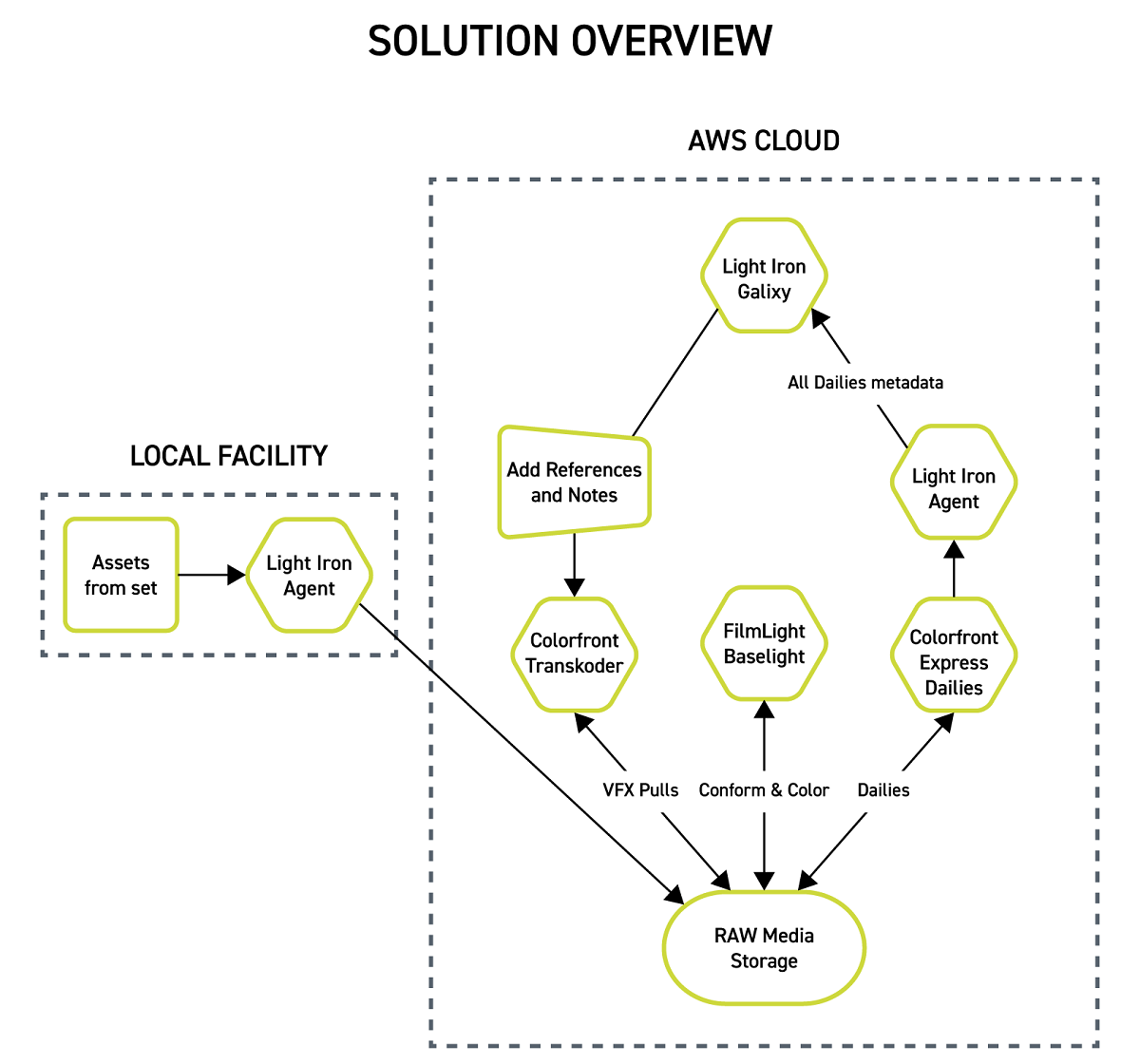
An earlier version of the workflow was used on the show Biosphere, which piqued interest from both parties in continuing to develop an advanced, cloud-based process.
MovieLabs goes into detail about the workflow if you want all the nuts and bolts. We’ve summarized the benefits and also the areas where the technology behind the workflow needs a little more work.
First some context: The standard post-production method over the last decade has included “lots of less-than-optimal workflows,” such as multiple terrestrial data movements, project file management, asynchronous status updates, and reviews, emails, phone calls and waiting.
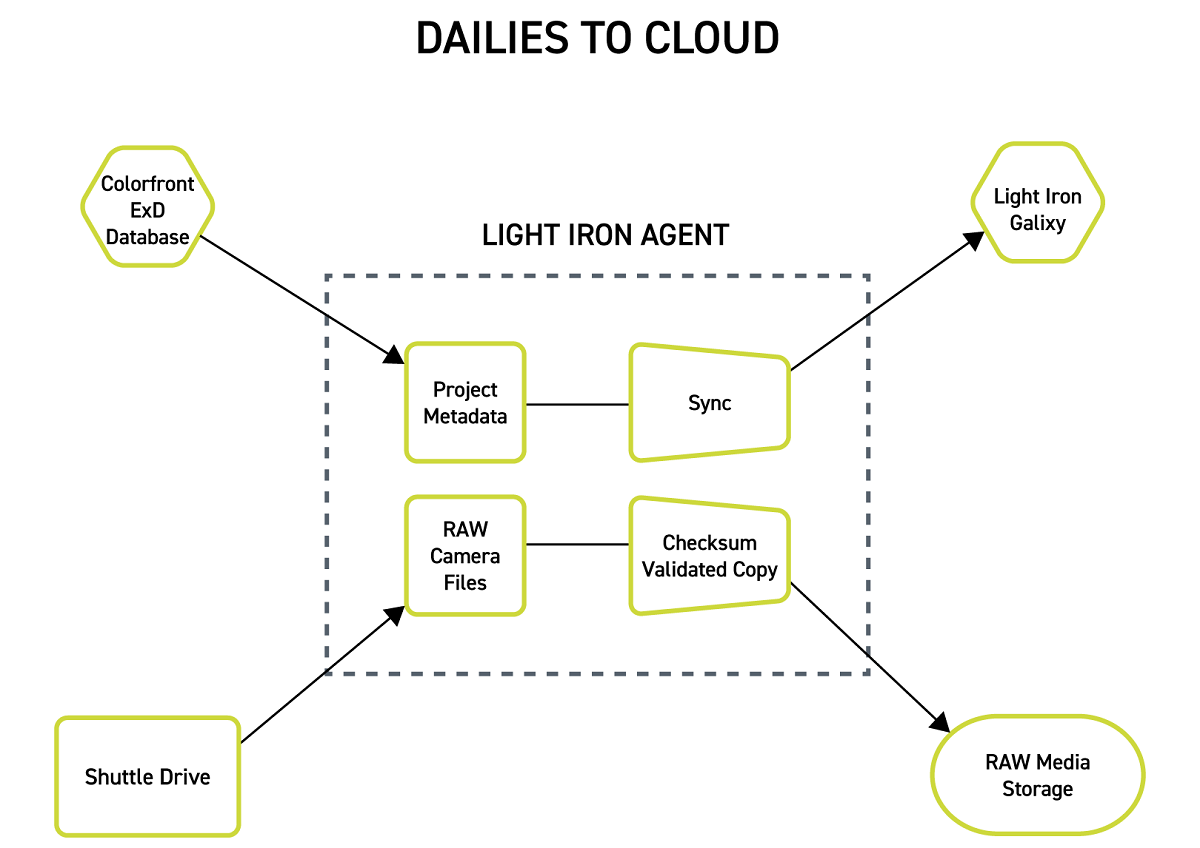
Dailies typically take 12-16 hours to turn around, usually with a dedicated overnight operator for every show. VFX pulls similarly require a team of people to find, load, and transcode every submitted shot list manually, with a delivery window averaging 24-48 hours per request. Even the conform process averages a week of work due to the sheer amount of time needed to wrangle hundreds of thousands of frames from archival tape, VFX vendors, titling, and graphics facilities, etc.
“The reliance on manual and segmented workflows not only contributes to operational bottlenecks but also increases the likelihood of errors, miscommunications and data loss,” says MovieLabs.
“Each transition in the production phase requires considerable manual effort, further exacerbating the risk of inaccuracies that necessitate time-consuming corrections and redeliveries. The industry has become numb to this inefficiency simply because it has been the status quo for so long.”
Cloud technology, internet connectivity and software tools now exist, to change all this up.
About the Workflow
Light Iron designed a workflow where the original camera files (OCFs) moved to an AWS cloud as fast as possible and stayed there for the duration of the project. All versions, renders, metadata, and other content were created in the same cloud storage location for immediate consumption by the production team, editorial team, and other post-production vendors.
All applications needed for the dailies and finishing phases of the show were co-located in the cloud with the media and metadata, which could be read directly without the need to make intermediate copies. These applications, including FilmLight’s Baselight and Colorfront’s Express Dailies, were remotely driven by editors, colorists, and other operators out of Light Iron offices in Los Angeles and Vancouver, which were fully outfitted with all the necessary monitors, control panels, and test signal devices required for a high-end finishing project.
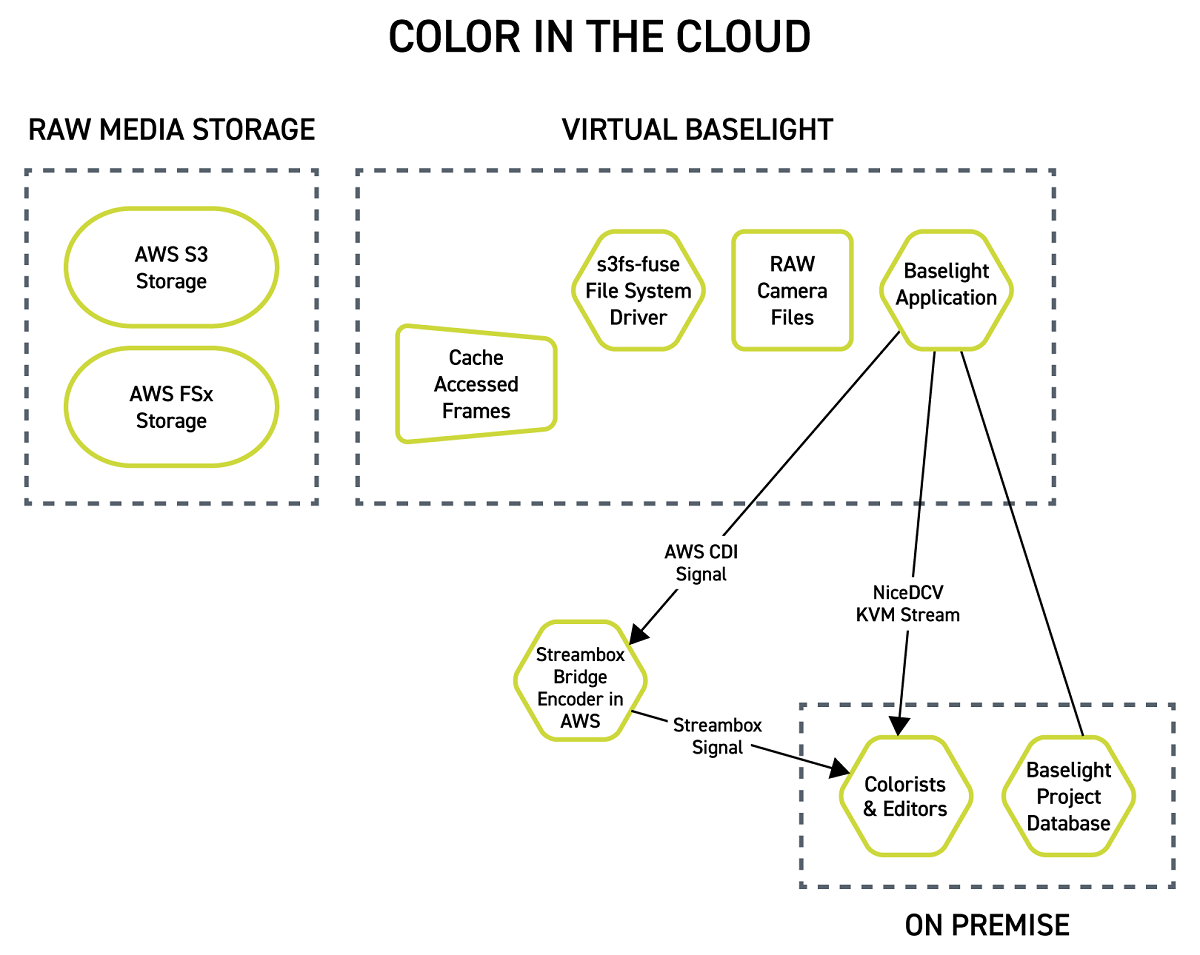
Other technologies utilized in the workflow included AWS’s S3, EC2, and FSx, Colorfront’s Express Dailies (ExD) and Transkoder, FilmLight’s Baselight, Light Iron’s Galixy, and Streambox.
To monitor the video output, Light Iron used Colorfront Streaming Server, which streams compressed feeds directly to a remote as a color accurate 10 bit 4:4:4 signal. This enabled the dailies colorist to validate that day’s work on a local, calibrated, OLED monitor.
The Benefits
The workflow focused primarily on enhancing efficiency and, ideally, reducing production costs and such it was a success. For instance, it was found to “significantly accelerate” the availability of dailies for creative and editorial teams, as OCF in the cloud was often available for processing on the same day it was shot.
“This kind of speed is becoming a crucial advantage in post-production pipelines, given the dynamic and fast-paced nature of contemporary productions,” Light Iron said.
It also meant the show’s editors could begin an early cut of a scene even before the production crew finished shooting at a given location, which in turn allowed work on visual effect shots to start much earlier than is typical.
“These incremental improvements, when implemented through the entire pipeline, had a marked effect on the length of shooting schedules and the number of hours spent by stakeholders ‘waiting around’.”
Additionally, having a single source of truth (the OCF bucket in the cloud) for each part of the process was said to eliminate errors in transfer and copy between various storage volumes (as those steps no longer exist).
“The time and cost savings from this alone was pronounced for a post-production facility, as additional storage volumes did not need to be purchased, additional I/O hours for manual copies did not need to be logged by an operator, and the need for round-the-clock troubleshooting support was greatly reduced.”
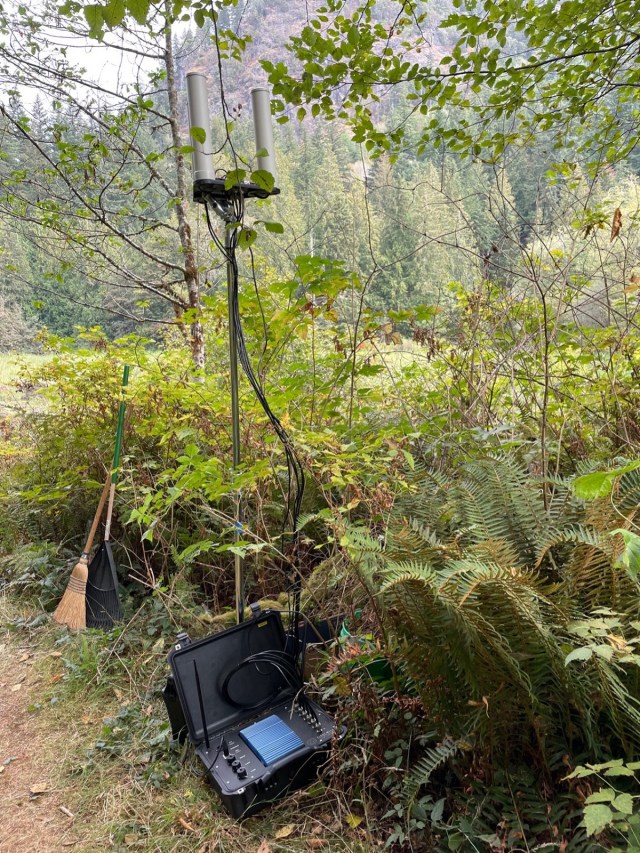
All combined, these benefits optimized resource utilization, accelerated project timelines, and reduced production costs.
It is a shiny case study for the MovieLabs 2030 Vision, too. “[Penelope] demonstrates the benefits of an all-cloud workflow, designed from the beginning to ingest both on-set proxies and OCF straight to the cloud. Collaborators anywhere in North America successfully used machines based in the US-West region with no latency impact,” they state.
“Processes that used to take hours, days or even weeks now can happen in real time by spinning up compute instances in the cloud with the media instead of waiting for media to be moved to the applications.”
However, as MovieLabs caveats, “although the workflow required caching for the object store to provide sufficient performance for color workflows, the seamless integration on top of AWS S3 minimized any chance of creating rogue copies of data.”
The Gaps In the Chain
This was not quite a full camera-to-cloud pipeline, and issues were identified that could be improved on.
For example, original camera files (OCF) were stored on hard drives and transported to the facility once or twice daily, as per normal. While lower resolution capture proxies were uploaded from set to Frame.io in real-time, the size of the raw media, and the bandwidth limits of the on-set satellite uplink, necessitated this more traditional path for the full resolution files.
In addition, even when OCF was uploaded to the cloud from the facility, real-time playback directly from the OCF stored in the cloud was not possible, “due to the reality of today’s cloud and bandwidth infrastructure.”
Instead it was necessary to use caching, a technique to create temporary local copies of files, to ensure adequate performance for color review. This process wasn’t seamless because caching only occurred once the file was first accessed.
“After creating a fully conformed timeline, the editor had to play it all the way through to ensure that all the media was properly copied before turning the timeline over to the colorist.”
Cloud costs were also “a major concern for the whole process and required careful management to make sure the cloud resources were used efficiently and effectively,” said MovieLabs.
“This workflow demanded a considerable amount of expensive FSx storage to accommodate the large, single file RAW formats used on the production. While storage costs continue to decline, Light Iron says it is providing special emphasis on smart resource scaling in future applications and automated pipelines.”
What Comes Next?
Future “color in the cloud” projects will look to third parties for enhancements in the underlying technology stack.
A number of third-party vendors are working to enable a more seamless if not real-time playback of shared file systems within AWS and other cloud providers. These are expected to offer similar performance and usability to traditional on-premise SAN systems, says Light Iron.
Another major improvement would be a vendor interface for interacting with virtual workstations in AWS. “Cloud-based production workflows would benefit from an abstraction layer that could serve as a user dashboard for interfacing with the virtual machines.”
Light Iron further expects to explore abstracting cloud workflows “away from heavy reliance on one cloud vendor,” saying, “there are clear potential benefits to picking and choosing services from different cloud vendors based on cost and functionality.”
Light Iron believes that taking a multi-cloud approach will allow better service for studios and production companies who have chosen to contract with other providers for their storage or compute needs.
“With high-speed networking getting less expensive every day, there are fewer roadblocks to spreading an uncompressed finishing workflow across multiple providers.”
The next challenge to tackle is performing creative Finishing VFX work in the cloud. This also requires low latency and high color accuracy, but VFX work demands even higher-performance systems with significant rendering capabilities and storage speed.
READ MORE: Light Iron Colors Penelope in the Cloud (Panavision)
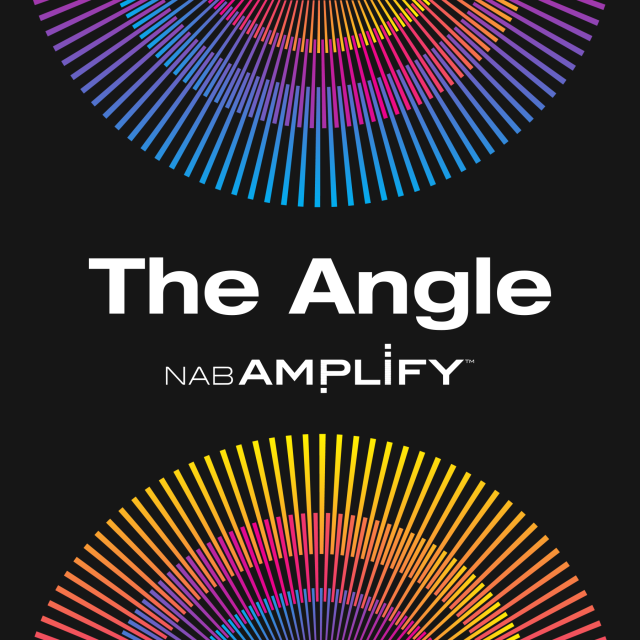
Why subscribe to The Angle?
Exclusive Insights: Get editorial roundups of the cutting-edge content that matters most.
Behind-the-Scenes Access: Peek behind the curtain with in-depth Q&As featuring industry experts and thought leaders.
Unparalleled Access: NAB Amplify is your digital hub for technology, trends, and insights unavailable anywhere else.
Join a community of professionals who are as passionate about the future of film, television, and digital storytelling as you are. Subscribe to The Angle today!


